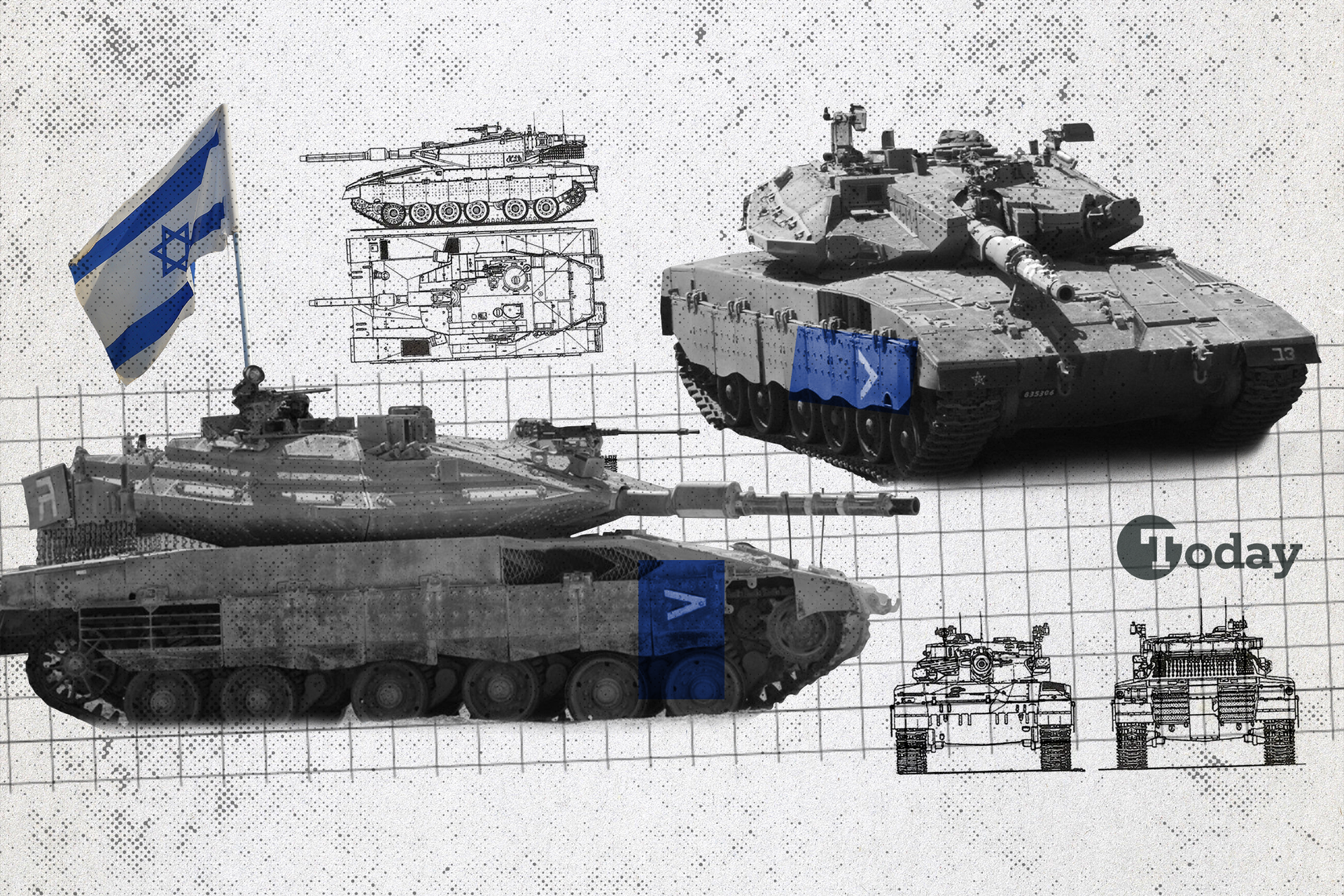
Since its introduction in 1979, the Merkava tank has served as the cornerstone of Israel’s armored forces. Designed with a focus on crew protection and operational versatility, the Merkava has undergone several upgrades, culminating in the latest model, the Merkava Mark 4 Barak.
Although there is no official data on how many Merkava tanks Israel has lost during its operations in Gaza and Lebanon, the footage released by Hamas and Hezbollah suggests that dozens of tanks have been "destroyed" or "seriously damaged".
Since Israel follows a policy of severe censorship of the media in relation to its military activities, it is obvious that as long as no such information is released by official authorities, one can only make assumptions based on the images released by Hamas and Hezbollah.
Until last year, Merkava tanks were not pursuing any exports, but last year Israel announced that it would export Merkava 3 tanks to two unnamed countries. While the possibility that one of these countries was Greek Cyprus was frequently mentioned, the other was claimed to be Morocco. The current fate of the sale is unknown.
https://www.youtube.com/watch?v=DaeGkGL_4uI
The Merkava series began with the Merkava Mark 1, developed in the 1970s in response to the challenges faced by the Israeli army in securing reliable foreign tank supplies.
After a canceled deal with the British for Chieftain tanks, Israel sought to develop its own indigenous tank, prioritizing crew safety and adaptability for local combat conditions.
The Mark 1 saw its first action in the 1982 Lebanon War. Over the decades, the tank has evolved through four major versions:



In 2023, the Merkava Mark 4 Barak, often mistaken as the "Merkava Mark 5," began replacing earlier Mark 4 models. This iteration integrates artificial intelligence systems and enhanced situational awareness tools, providing a tactical edge on the modern battlefield.

The Merkava Mark 4 and its variants have incorporated cutting-edge technology that sets them apart from other MBTs, such as the Leopard 2A7, Challenger 2, and M1 Abrams. Some of the most notable innovations include:
Trophy APS: Developed by Rafael Advanced Defense Systems, Trophy provides unparalleled protection by detecting and neutralizing incoming projectiles, such as rocket-propelled grenades (RPGs) and anti-tank missiles. This system proved invaluable in the 2014 Gaza conflict (Operation Protective Edge), where it intercepted numerous threats, preventing damage to the tanks.

Advanced fire control systems: Merkava’s fire control systems allow for high accuracy in targeting both stationary and moving objects, even in complex environments such as urban warfare. The tank's ballistic computer and sensors ensure precise shooting capabilities in all conditions.
Modular armor: One of the Merkava’s key features is its modular armor, which can be replaced quickly in the field. This allows for adjustments based on the specific threats of a given operation, whether facing anti-tank missiles or urban combat dangers.
C4I Integration: The Merkava Mark 4 and 4M (Barak) are equipped with a digital battlefield management system (BMS) that allows real-time communication between the tank and command centers. This capability enables better coordination with infantry and artillery units, as well as integration with intelligence systems for more effective battlefield awareness.

Crew: 4
Length hull: 7.45 meters
Ground clearance: 0.47 meters
Ground pressure: 0.9 kilogran per centimeters
Fuel capacity: 1250 liter
Armament: 1 x 105 mm, 1 x 7.62 mm MG (coaxial), 2 x 7.62 MG (anti-aircraft) and 1 x 60 mm mortar
Width: 3.7 m
Power-to-weight ratio: 14.28 horsepower (hp)/tonne
Engine: General Dynamics Land Systems, AVDS-1790-6A V-12 diesel developing 900 hp
Gradient: 70%
Ammunition: 62 x 105 mm, 10,000 x 7.62 mm
Height to commander's cupola: 2.75 ml
Weight, combat: 60,000 kilograms
Maximum road speed: 46 kilometers per hour (km/h)
Side slope: 38%
Length gun forwards: 8.63m
Height to turret roof: 2.64 m
Weight, empty: 58,000 kg
Maximum range: 400 km
Armour: Classified, Ballistic(?)
Fording: 1.38 m, 2 m (with preparation)
Vertical obstacle: 0.95 m
Trench: 3m
Armour type: Steel/spaced/laminate
NBC system: Yes

Armament: One 105 mm rifled gun, three 7,62 mm machine guns, one 12,7 mm machine gun, one mortar 60 mm, and 12 smoke dischargers.
Weight: 61,000 kg
Country users: Israel
Speed: 61 km/h
Combat Equipment: Computerized firing control system, NBC protection, and thermal night vision.
Range: 500 km
Crew: 4
Dimensions: Length: 7.45 m; Width: 3.70 m; Height: 2.64 m
Armor: Laminated armor and special armor

Armament: One 120 mm rifled gun, three 7.62 mm machine guns, one mortar 60 mm, and 12 smoke dischargers.
Dimensions: Length: 7.60 m; Width: 3.70 m; Height: 2.65 m
Combat Equipment: Firing gun computer control system, NBC protection, thermal night vision.
Range: 500 km
Crew: 4
Speed: 60 km/h
Armor: Modular special armor
Weight: 65,000 kg

Armament: One 120 mm rifled gun, three 7,62 mm machine guns, one 12.7 mm machine gun, one mortar 60 mm, and 12 smoke dischargers.
Dimensions: Length: 7.6 m hull; Width: 3.72 m; Height: 2.66 m
Combat Equipment: Firing gun computer control system, NBC protection system, night vision
Range: 500 km
Crew: 4
Speed: 60 km/h
Armor: Composite matrix of laminated ceramic-steel-nickel alloy. Sloped modular design.
Weight: 65,000 kg

